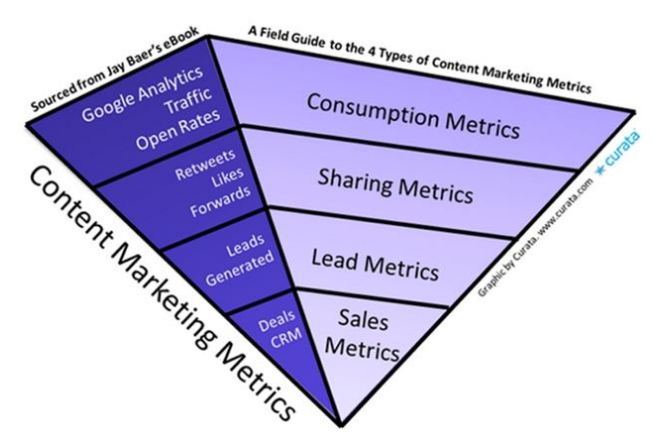I get a lot of questions about content measurement and analysis. If you’re going to spend time and money on content marketing, then you want to understand how well it’s working and if it’s worth the investment, right?
While in the perfect world this makes a lot of sense, it doesn’t always take hold in the real world.
Many companies start with entirely the wrong premise when it comes to content marketing.
They start by measuring something like page views or click-thrus or time on site as their primary metrics for success. But these usually aren’t insightful for understanding whether or not your content marketing is actually helping to grow your business.
There are two problems with this approach:
- Having the wrong metrics often means you do the wrong things (i.e., stuff that doesn’t work)
- Poor measurement means you can’t see what’s working and continue to improve, so your content marketing stagnates or fails entirely
In a recent article for MarketingProfs, I explained how our team tries to embrace failure and learn from the content that we create so we can continuously improve what we’re doing and how we do it.
But, in order to accomplish that, your startup first needs to know how to properly measure its content marketing efforts in order to learn and improve.
Here’s how you can get the right measurements in place.
Start with your business objectives
At the root of any content marketing strategy, there should be a business case for why you’re doing it.
Creating and promoting great content takes time, money and effort. So it’s not an investment you should make without understanding why you’re making it.
In order to truly be able to measure and improve your content marketing, you need to begin by understanding the business objective that you are trying to achieve with the content in the first place. This may be increasing sales or revenue, generating leads or improving engagement with your existing audience.
Whatever the case for your business, start by defining this key part of your strategy.
Related: 7 Ways to Know if Your Content Marketing is Actually Working
Define your metrics based on your goals
Based on your business objective(s), you should create metrics to measure your content marketing success.
Again, I see many companies fall into the “vanity metrics” trap where they focus on numbers that seem important (pageviews, time on site, etc.), even if they don’t correlate at all to the ultimate goal (sales, revenue, etc).
So, focus on your goal first. Then set metrics.

Depending on what your specific goal is, you may need to create some very precise metrics that you can use to understand the true effect of your content marketing.
For example, if you are trying to generate leads, then you will likely want to use a “lead magnet” or other lead-capture mechanism. You’ll want to be able to measure the precise number of people who convert from a blog post into a subscriber/lead via this content.
In another case, you may be trying to generate direct sales inquiries. To accurately measure this, you’ll need to create a report that shows you how many people came to your site because of your content and then inquired or made a purchase.
This might require you to set up some custom segments or reports in Google Analytics or another tracking platform. But, having the right data is critical.
So, take the time to define the metrics that matter and then figure out how to measure them.
Sign Up: Receive the StartupNation newsletter!
Measure, learn and test
Once you have defined your metrics and they are correlated to your ultimate business goals, you need to make a habit of regular measurement and reporting.
You should carve out time every one to two weeks to review your metrics with the team.
Look for specific patterns or insights. Ask clearly, “What has been working?”
Remember that the definition of “working” is based on the metrics that you defined in step two. So, if you chose the wrong metrics or if those metrics don’t accurately reflect the value of your content, then it will lead you to the wrong conclusions. Again, goals and metrics are the most important part of this process.
Then, use that feedback as you go into your next planning or strategy meeting.
Our team hosts monthly retrospectives for client content, where we go over the specifics of what we’ve been working on, what has been successful, and what adjustments we can or should make to move forward.
In addition, you should keep a running list of ideas and theories that you want to test.
During the course of discussion, you’ll likely have these ideas come out. “What if we tried this post format?” Or, “What if we moved this button over here?”
These are great ideas and should be kept as a running set of experiments to test and try as part of your ongoing effort to measure and improve.
Keep in mind the most important thing: you will fail. Some things won’t work. Some ideas might hurt your performance, but, the point is to learn. In order to improve, you need to test, measure and grow.






